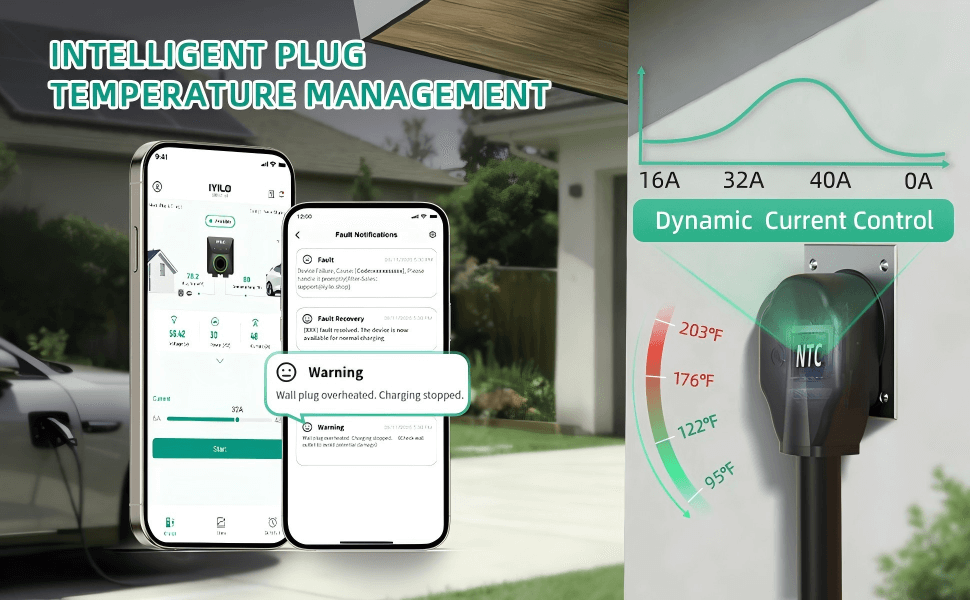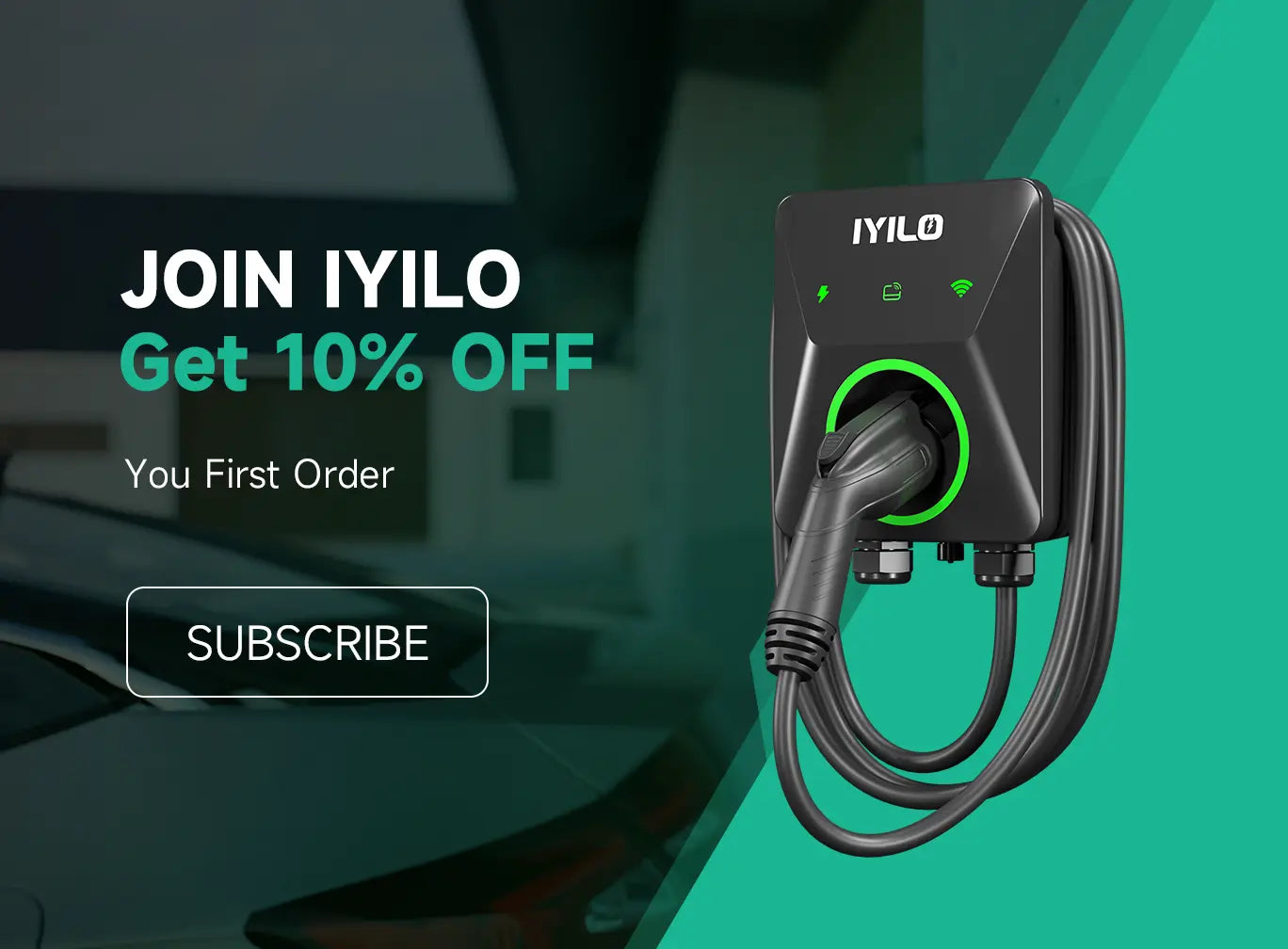EV charging at home has become more prevalent in recent years. As automotive electrification has been widely promoted globally, consumers have gradually acknowledged that electric vehicles are more competitive and cost-effective than ICE vehicles. Meanwhile, consumers realized that charging at DC fast charging stations is not an accountable approach.As a result, more and more customers intend to install a Level 2 EV charger as their long-term charging solution.
Charging at home of course is an optimal choice for customers who only commute on workday.Because they can charge EV at night with a relatively low rate,which can save quite a considerable amount of money for an entire year. But this approach really gives rise to another question:Is Level 2 EV charging at home really safe?
According to the Electrical Safety Foundation International (ESFI), electrical devices cause roughly 51,000 home fires annually in the United States, resulting in more than 500 deaths, about 1,400 injuries, and over $1.3 billion in property losses each year.

Level 2 EV Charger as a main charging device for Electric vehicle at home, provides high current output and long-time charging session which is likely to lead short cricuit and overload.Especially for Plug-in Level 2 EV Charging device, improper installation of outlet or ordinary outlet may vulnerable lead the burning or damage.
That is why when you are on forums, you'll find that many people recommend using the hardwired installation method.
Another potential hazard is that when consumers charge at night, they are unaware of impending dangers.
For consumers to better manage their level 2 ev charger safely, here are couple of “need-to-do” before we install a home level 2 ev charger.
Making an inspection to your connection wires
This is one of the prevalent fire hazards, especially for consumers who have never replaced their electrical wiring. Electrical wires are vulnerable to wear or corrosion after long-term use, and should be replaced every few years.
If the connection part of a wire wears out, it may result in severe consequences. For example, deteriorated insulation may expose live wires, posing a risk of electric shock. A loose contact point can also cause voltage fluctuations, which may damage appliances or chargers.
Install using standard-compliant wires and electrical accessories.
Different chargers come with a maximum charging output, which determines how many kW you can get per hour. However, many EV owners do not really care or know less about the installation requirement,such as what gauges of wire should be applied to this EV charger? What is the minimum requirement for this dedicated circuit breaker to use.
To give a better illustration, we will take The IYILO ev charger as an example for you to take reference.
The gauge of wire of charger installation
IYILO EV Charger
Some people may know that the IYILO Level 2 charger has two models: IYILO-RA40 and IYILO-RA48, with maximum outputs of 40 A and 48 A, respectively. Let’s take the 48 A model as an example: the L1/L2 wires for EV charger installation should be no smaller than 6 AWG copper, and the GND wire should be no smaller than 10 AWG copper, rated for 75 ℃ when installed inside an electrical conduit.
Meanwhile, the circuit breaker for this 48 A EV charger should be a dedicated breaker used exclusively for the EV charger. The minimum requirement for the circuit breaker of a 48 A charger is 60 A (calculated as current × 125% according to the NEC guidelines).
Use the EV-Rated outlet
The most common EV outlet model is NEMA 14-50, which is also commonly used for regular home appliances such as dryers or washers. It can handle up to 40 A; however, a standard NEMA 14-50 outlet is not suitable for continuous-load equipment—by which I mean equipment that draws high current and operates for three hours or more.
Choosing an EV-rated outlet can significantly reduce the risk of fire hazards.which is also being recommended by NEC guidelines when people install with NEMA outlet.
Wiring under proper instruction by an electrician
Ordinary consumers with no electrical knowledge can mess up the wiring process, leaving potential risks for later.Besides, safety concerns are another major reason. Non-professional personnel without proper PPE are likely to get an electric shock during the installation process.
The IYILO EV Charger, featuring an NTC sensor, has changed the industry’s safety standards.

In 2025, IYILO developed its brand-new product — the IYILO Level 2 EV Charger. The core value of this brand is safety. To achieve this goal, IYILO self-developed a plug temperature protection system. This feature allows the charger to automatically adjust the charging current according to real-time plug temperature fluctuations.
For example, when the NEMA 14-50 plug temperature exceeds 185 ℉, the charger will reduce the current to 32 A, helping the plug temperature return to a normal range more quickly. If the plug temperature exceeds 203 ℉, the charger will stop charging immediately to prevent any further temperature increase.
IYILO’s innovative features have redefined the home EV charging experience. Customers are now empowered to shift from passively relying on the device’s safety mechanisms to proactively monitoring the charger’s safety status — and even intervening themselves to prevent potential risks.
Conclusion
EV Charging at home is undoubtedly a cost-effective solution for most EV owners. A properly installed home charger can greatly improve charging efficiency and enhance both convenience and cost savings. However, as mentioned above, safety should always be our top priority, since continuous and long-term charging requires reliable components and certified accessories. If your charger is equipped with a plug temperature sensor—like IYILO’s—then it provides an even higher level of protection.



0 comments